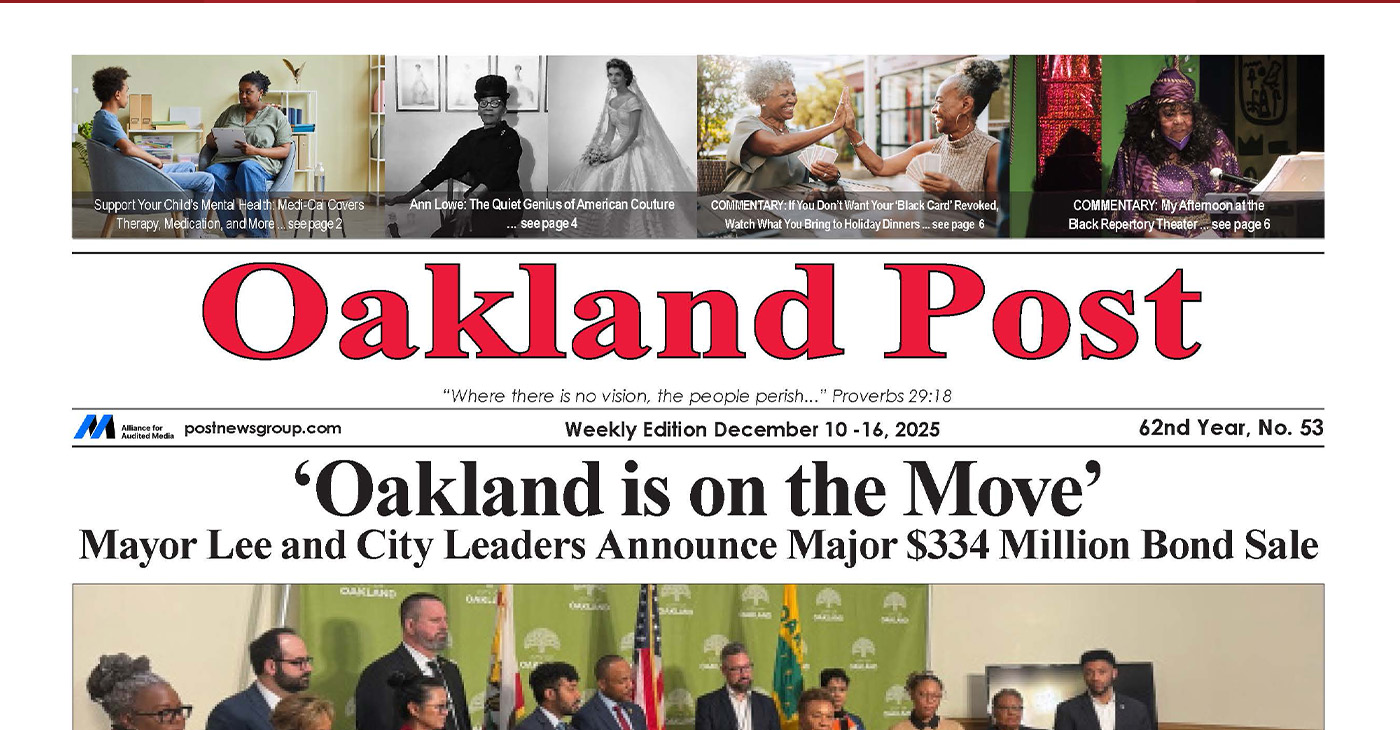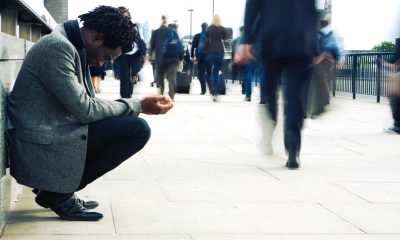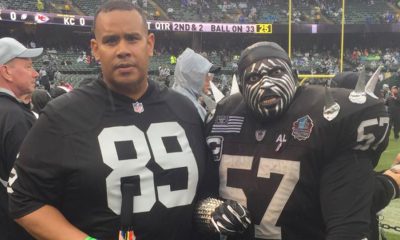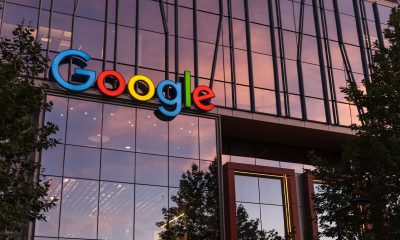Business
Google Teams Up with 3 Wireless Carriers to Combat Apple Pay

In this Jan. 17, 2012 file photo, a person tries a smartphone loaded with Google Wallet at the National Retail Federation in New York. Google is teaming up with three major U.S. wireless carriers in an effort to prod more people into using its mobile wallet and undercut the rapid success of Apple’s rival payment service. (AP Photo/Mark Lennihan, File)
MICHAEL LIEDTKE, AP Technology Writer
SAN FRANCISCO (AP) — Aiming to undercut Apple’s latest hit service, Google is teaming up with three major U.S. wireless carriers to prod more people into using its mobile wallet.
The counterattack announced Monday is just the latest example of how the competition between Google Inc. and Apple Inc. is extending beyond the technology industry’s traditional boundaries. Besides payments, Silicon Valley’s two richest companies are expanding into fields such as home appliances and cars to increase their power and profits.
Google’s latest volley calls for its payment service to be built into Android smartphones sold by AT&T Inc., Verizon Wireless and T-Mobile USA later this year. Smartphone owners currently have to download the service, called Google Wallet, and install the app on their phone if they want to use it to buy something instead of pulling out cash or a credit card.
Apple’s rival service, Apple Pay, already comes embedded in the latest versions of the company’s mobile software.
Besides trying to make it more convenient to use Wallet, Google also is hoping to improve the nearly 4-year-old service. Toward that end, Google Inc. is buying some mobile payment technology and patents from Softcard, a 5-year-old venture owned by the wireless carriers. Financial terms weren’t disclosed.
Although Google and the wireless carriers got a head start with their digital wallets, the concept hadn’t gained much traction until Apple Pay debuted last fall.
The service has become more popular than Apple expected, according to a recent presentation by CEO Tim Cook.
Just three months after Apple Pay’s November debut, Cook said the service accounted for two out of every three dollars spent across the three major U.S. card networks, when no card was used. About 2,000 banks and credit unions have agreed to offer Apple Pay to its customers. Apple hasn’t said how many merchants are set up to handle its mobile payment services.
If Apple builds on that early momentum, the Cupertino, California, company could become the leader in what is expected to be a booming market. Nearly 16 million U.S. consumers spent about $3.5 billion on tap-and-pay services last year, according to the research firm eMarketer. By 2018, eMarketer predicts those figures will rise to 57 million U.S. consumers spending about $118 billion.
Companies that provide mobile wallets make money by collecting processing fees from merchants and banks.
Samsung Electronics, another major smartphone maker, may be ready to join the fray after buying a mobile payment startup called LoopPay. That deal, announced last week, fueled speculation that Samsung will include a digital wallet on its next phone.
Apple Pay’s popularity probably helped forge the unlikely alliance between Google and the wireless carriers. Google traditionally has had a prickly relationship with the carriers, largely because it doesn’t believe enough has been done to upgrade wireless networks and make them cheaper so more people can spend more time online. Media reports say Google is considering selling its own wireless plans to consumers.
The pre-installation of the Wallet app is similar to what Google already does with its search engine, Gmail and YouTube on millions of other phones running on Android — an operating system that Google has been giving away for years to ensure people keep using its products on mobile devices. Google profits from the traffic by showing ads.
Copyright 2015 The Associated Press. All rights reserved. This material may not be published, broadcast, rewritten or redistributed.
Activism
Oakland Post: Week of December 10 – 16, 2025
The printed Weekly Edition of the Oakland Post: Week of – December 10 – 16, 2025

To enlarge your view of this issue, use the slider, magnifying glass icon or full page icon in the lower right corner of the browser window.
Alameda County
Seth Curry Makes Impressive Debut with the Golden State Warriors
Seth looked comfortable in his new uniform, seamlessly fitting into the Warriors’ offensive and defensive system. He finished the night with an impressive 14 points, becoming one of the team’s top scorers for the game. Seth’s points came in a variety of ways – floaters, spot-up three-pointers, mid-range jumpers, and a handful of aggressive drives that kept the Oklahoma City Thunder defense on its heels.

By Y’Anad Burrell
Tuesday night was anything but ordinary for fans in San Francisco as Seth Curry made his highly anticipated debut as a new member of the Golden State Warriors. Seth didn’t disappoint, delivering a performance that not only showcased his scoring ability but also demonstrated his added value to the team.
At 35, the 12-year NBA veteran on Monday signed a contract to play with the Warriors for the rest of the season.
Seth looked comfortable in his new uniform, seamlessly fitting into the Warriors’ offensive and defensive system. He finished the night with an impressive 14 points, becoming one of the team’s top scorers for the game. Seth’s points came in a variety of ways – floaters, spot-up three-pointers, mid-range jumpers, and a handful of aggressive drives that kept the Oklahoma City Thunder defense on its heels.
One of the most memorable moments of the evening came before Seth even scored his first points. As he checked into the game, the Chase Center erupted into applause, with fans rising to their feet to give the newest Warrior a standing ovation.
The crowd’s reaction was a testament not only to Seth’s reputation as a sharpshooter but also to the excitement he brings to the Warriors. It was clear that fans quickly embraced Seth as one of their own, eager to see what he could bring to the team’s championship aspirations.
Warriors’ superstar Steph Curry – Seth’s brother – did not play due to an injury. One could only imagine what it would be like if the Curry brothers were on the court together. Magic in the making.
Seth’s debut proved to be a turning point for the Warriors. Not only did he contribute on the scoreboard, but he also brought a sense of confidence and composure to the floor.
While their loss last night, OKC 124 – GSW 112, Seth’s impact was a game-changer and there’s more yet to come. Beyond statistics, it was clear that Seth’s presence elevated the team’s performance, giving the Warriors a new force as they look to make a deep playoff run.
Activism
Oakland Post: Week of November 26 – December 2, 2025
The printed Weekly Edition of the Oakland Post: Week of November 26 – December 2, 2025

To enlarge your view of this issue, use the slider, magnifying glass icon or full page icon in the lower right corner of the browser window.
-

 Activism4 weeks ago
Activism4 weeks agoOakland Post: Week of November 12 – 18, 2025
-

 Activism3 weeks ago
Activism3 weeks agoIN MEMORIAM: William ‘Bill’ Patterson, 94
-

 Activism4 weeks ago
Activism4 weeks agoHow Charles R. Drew University Navigated More Than $20 Million in Fed Cuts – Still Prioritizing Students and Community Health
-

 Bay Area4 weeks ago
Bay Area4 weeks agoNo Justice in the Justice System
-

 #NNPA BlackPress3 weeks ago
#NNPA BlackPress3 weeks agoBeyoncé and Jay-Z make rare public appearance with Lewis Hamilton at Las Vegas Grand Prix
-

 #NNPA BlackPress3 weeks ago
#NNPA BlackPress3 weeks agoLewis Hamilton set to start LAST in Saturday Night’s Las Vegas Grand Prix
-

 Activism3 weeks ago
Activism3 weeks agoOakland Post: Week of November 19 – 25, 2025
-

 #NNPA BlackPress4 weeks ago
#NNPA BlackPress4 weeks agoThe Perfumed Hand of Hypocrisy: Trump Hosted Former Terror Suspect While America Condemns a Muslim Mayor

















































